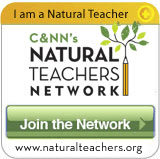From our last "Side of Nature: Activity" where we encouraged you to tap into your inner naturalist. Practice wildlife watching like a biologist. We tend to anthropomorphize animals when watching or discussing them. We humanize or assume certain animal behavior usually by assigning human emotion, our own experience, expectation, or reaction to a situation that wouldn’t be true for wildlife whose behavior is mostly based on perpetuating their species.
A great exercise for older children and adults is to journal wildlife activity, including scientific observations, exploring the line between inference and observation. For example, what do you observe in the picture above? An scientific observation might include: bird with blue, brown and white feathers, on a wood structure, with a worm or larva in its beak. An inference would be: a bird that is tired and resting on a wood fence, or with a worm in its beak that it is taking back to its nest to feed its babies.
This bird may not be tired, but scouting its route instead; from the photo, that fence could be a garden border, not a fence. Even if we watched this bird enter a box nest or tree trunk nest, and emerged without the worm, we still couldn't scientifically say it fed babies without actually observing that behavior or activity (it could've dropped the worm, eaten the worm itself, or fed its mate instead). Practice this type of observation to hone your wildlife watching skills--you'll be amazed at the information you can gain just by watching and learning. Then test/research your theories or inferences through books, online research, or by asking another naturalist or interpretive guide to learn more about the behaviors of specific species you have been watching.
You just might discover that your own scientifically based observations will provide a valuable contribution to a growing knowledge base about the wildlife in your area!









No comments:
Post a Comment